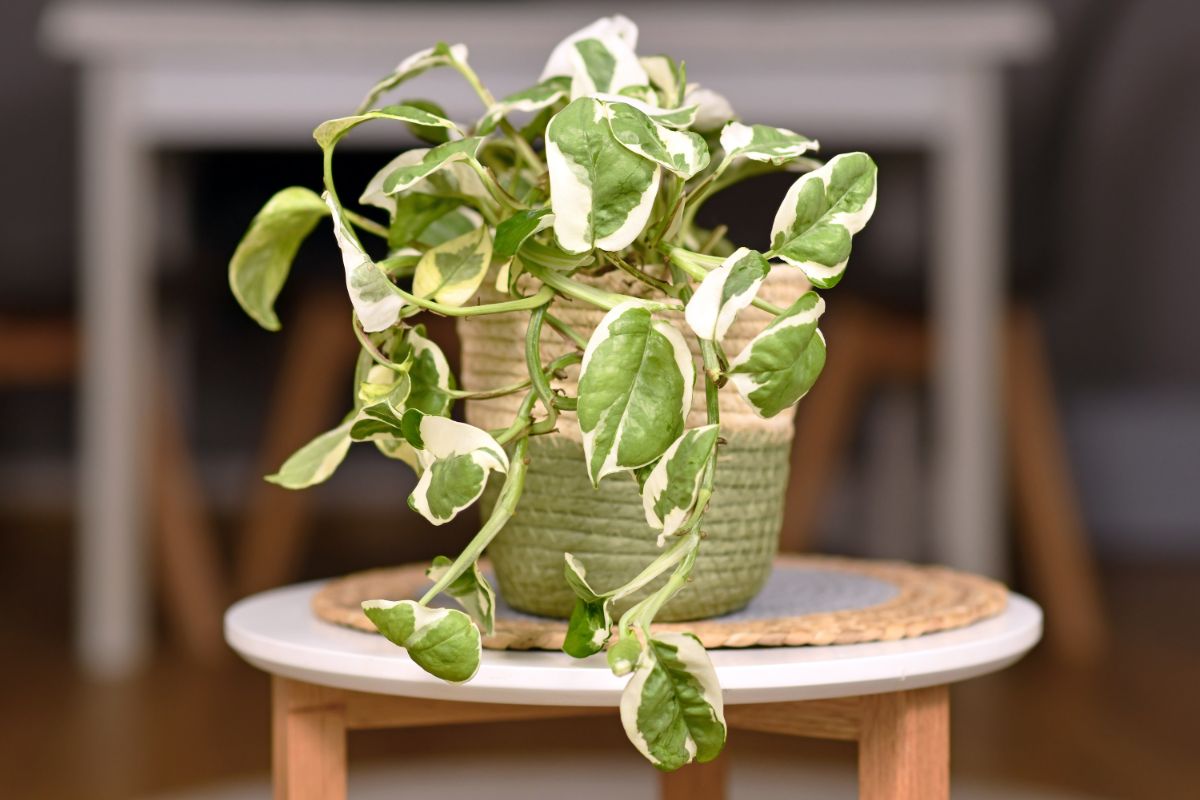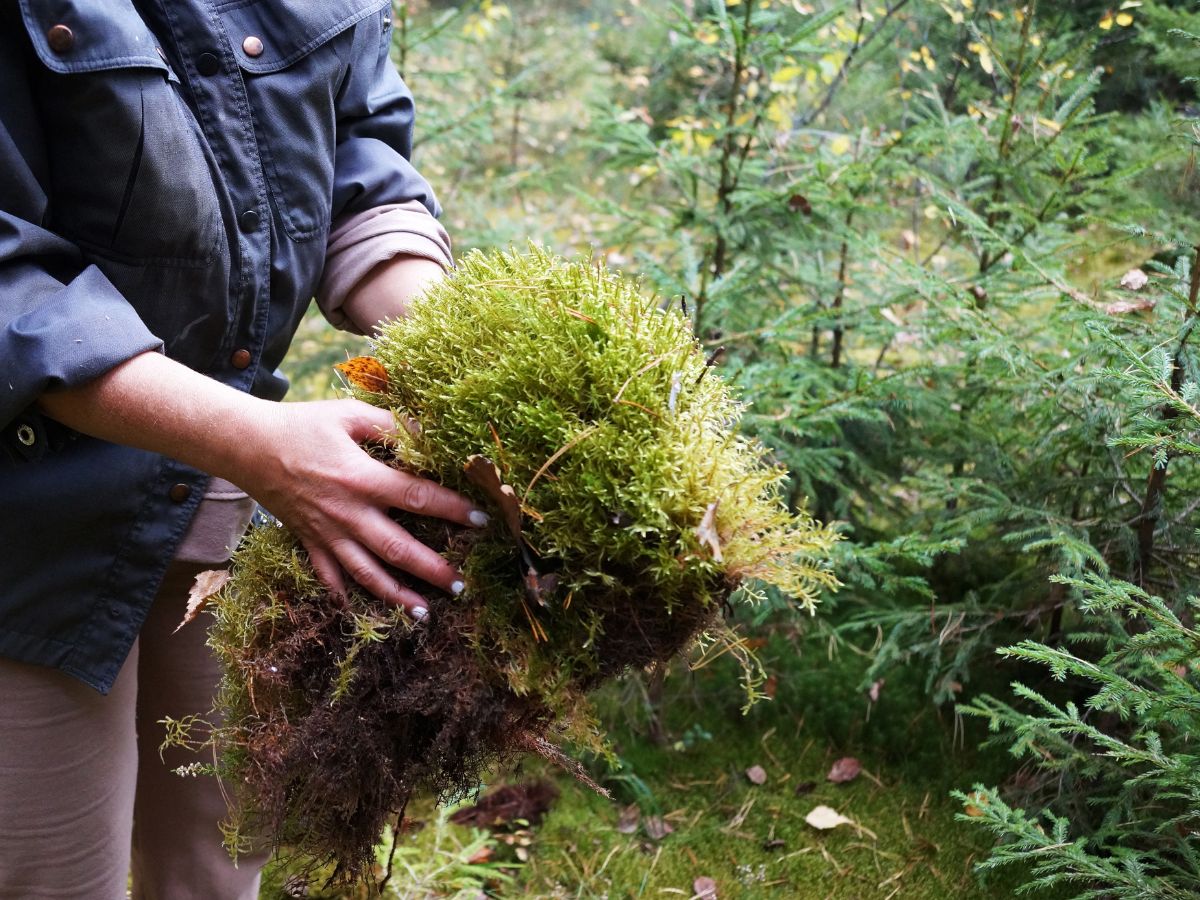If you want to propagate a pothos plant but need clarification about where to start, there's no need to be, as it is relatively easy. Its easygoing nature makes this plant stand out among most other plants.

The most popular method of pothos propagation is cuttings, which is the easiest. As stress-free as the process is, you must learn a few tricks to give you a better chance of success. In this article, we will highlight a few steps on how to propagate pothos plants.
Jump to:
What Are Pothos Plants?
Also known as Devil's Ivy, pothos plants are among the easiest plants to grow. It is also a laid-back, low-maintenance plant, regardless of the variety you want to grow.
However, despite its low-maintenance feature, pothos can be a little expensive to purchase at a garden store, which is why most gardeners prefer creating theirs through propagation.
The Epipremnum aureum, as scientifically called, can hardly grow to maturity as houseplants, so sexual or seed propagation is not ideal.
It would be best to choose the asexual or vegetative propagation method, which is more straightforward and needs a bit more sanitized scissors, a jar of water, and a direct experience of the plant's physiology.
What You Will Need for Pothos Propagation

Before you start propagating pothos plants, certain materials must be readily available. However, the essential one is the "parent" pothos plant you intend to propagate from, as a baby can only be as strong as its parent. Other common materials you need will include;
- Scissors, pruners, or a sharp knife, alongside bleach or alcohol to disinfect
- Gloves for hand protection
- A jam or jelly jar
- A small container or pot containing half peat moss and half perlite.
- Rooting hormone and
- A little knowledge about how the cutting process works, which we'll provide below.
How Do You Propagate Pothos Plants?
You must note that you can propagate pothos by rooting cuttings in water or rooting them in soil. There is also the sphagnum moss propagation means. We'll show you how to propagate each of them, in case you want to choose.
1. How to Propagate Pothos Plants by Water Method

Water propagation of pothos plants is considered the most popular and easiest method. It is also interesting seeing your cuttings grow roots before your eyes, and moving them from water to soil is also easy.
Get your cuttings, a container, and water, and you are good to go. Below are the steps for this method;
· Take Stem Cuttings: With a pair of sharp and sterilized scissors or pruning shears, take stem cuttings out of its parent plant; with every cutting, you have at least 3 to 4 nodes. The nodes are the little bumps along the stem where the leaves and aerial roots grow and where fresh roots will germinate on the cuttings.
· Remove the Bottom Leaves: after taking your stem cuttings, the next thing is to remove the bottom leaves from the cuttings since the underside of the cuttings will sit in water. Prune off the leaves or carefully pull them from the stem. Endeavor to leave 1 to 2 leaves at the top of each cutting.
· Place the Cuttings in Water: Insert the stem cuttings into a little pot filled with water, and let the leaves remain on the water's surface, and the nodes on the stem are submerged. It will help if you use clear or colored glass jars, plastic containers, or small vases.
· Replace the Water Once a Week: As the cuttings are germinating, you can replace the water every week to help it stay fresh. Roots should start growing from the nodes along the stem in two weeks.
· Plant the Rooted Cuttings in Soil: if you notice that the cuttings have started producing roots at least 2 to 3 inches long, you can move them from water to soil. Ensure you use a well-draining soil mixture and put the cuttings in a little container featuring drainage holes. Water the new plant thoroughly and place it in a bright, indirect light. Again, let the soil stay evenly and moderately moist for the first one to two weeks to enable the roots to get used to the soil.
2. How to Propagate Pothos Plants by Soil Method

Some gardeners prefer to skip the water step and propagate pothos directly in the soil. Even though the water method is less common than the soil method, it is still very reliable. Here, you'll need to go for rooting hormone, pot, and some well-draining soil mix. Below are the steps to propagate pothos in soil;
· Take Stem Cuttings: Like the water method, you'll need to take stem cuttings from their parent plant using a pair of sharp and sterilized pruning shears or scissors. Each cutting must feature at least 3 to 4 nodes. The nodes are the little bumps along the stem where the leaves and aerial roots grow, and like the water method, they are where the new roots will germinate on the cuttings.
· Remove the Bottom Leaves: Take off the Bottom leaves from every cutting, leaving at least 1 to 2 leaves on top. Ensure you prune off the leaves and carefully lift them out of the stem.
· Dip the Cutting in Rooting Hormone: Here, you can take the cut end of every stem cutting and gradually insert it in a powder rooting hormone.
· Plant the Cuttings in the Soil: The next step is to create a small hole inside the soil with your finger. Put the cutting dipped in rooting hormone into the hole. Note that the pot must feature adequate drainage holes and should be manageable. Apply a well-draining potting mix to the container and dip the stem cuttings deep into the soil to enable the nodes along the stem to be properly buried and the top leaves to remain on top of the soil. Pat the soil down firmly but carefully to enable the cuttings to remain how they should.
· Keep the Soil Moist: Lastly, find a spot that gets enough bright, indirect light and position your container cuttings, ensuring you water them as required. Ensure the soil stays moderately moist (but not soggy) while the cuttings are growing roots. After some weeks, the soil can dry out slightly between watering.
3. How to Propagate Pothos Plants in Sphagnum Moss

Finally, you can propagate your pothos plant easily in sphagnum moss. It is a common method with some gardeners as they also use it for other plants.
If the water and soil propagation methods are challenging, then you can try this method. However, several people prefer using water or soil, especially when there's no available sphagnum moss.
· Soak the Sphagnum Moss: You'll usually get sphagnum moss in its dry state; hence, before you use it, soak it for about 20 to 30 minutes to rehydrate it. Then, get a bowl containing water and insert the real moss. Keep it aside while you continue with the rest of the steps.
· Take Stem Cuttings: With sharp and sterilized pruning shears or scissors, take stem cuttings from your parent plant. Each cutting should have at least 3 to 4 nodes. The nodes are the small bumps along the stem where the leaves and aerial roots grow. They are also where the new roots will grow on the cuttings.
· Remove the Bottom Leaves: Remove the Bottom leaves from each cutting, keeping at least 1 to 2 leaves at the top. Prune off the leaves or carefully lift them from the stem.
· Insert the Cuttings in the Moss: Immediately after soaking the moss, take it out of the water and shake it a bit to get rid of much water from it as possible. Ensure the moss stays moist and not soggy. Then, apply a small quantity of the sphagnum moss to a glass or plastic container or vase and insert the cuttings in the moss. Cover the Bottom of the stems with the exposed nodes with moss while keeping the leaves at the top above the moss. Carefully press the moss down around the cuttings, secure them, and let the moss touch the nodes of the cuttings.
· Keep the Sphagnum Moss Moist: Find a spot that gets to keep the cuttings and keep the sphagnum moss moderately moist. It may take weeks before roots start germinating, and it is important to keep the moss moist (but not soggy) all the time.
· Plant the Rooted Cuttings in Soil: Once the cuttings have roots at least 2 to 3 inches long, you can plant them in soil. It may take about a few weeks or even more than a month. Use a well-draining soil mixture and grow the cuttings in a small container with drainage holes. Give the freshly potted plant a good watering and take it back to a spot that gets it bright, indirect light. Keep the soil moderately moist for the first one to two weeks to help the roots acclimate to the soil.
Conclusion

As we mentioned earlier, it is relatively easy to propagate pothos plants as long as you have the required materials and a basic understanding.
Also, you should know that the best time to propagate pothos is during spring or summer, which is their active season. Growing them in the fall or winter will render your efforts fruitless, as the mother plant cannot recover from having stem cuttings taken from it.




